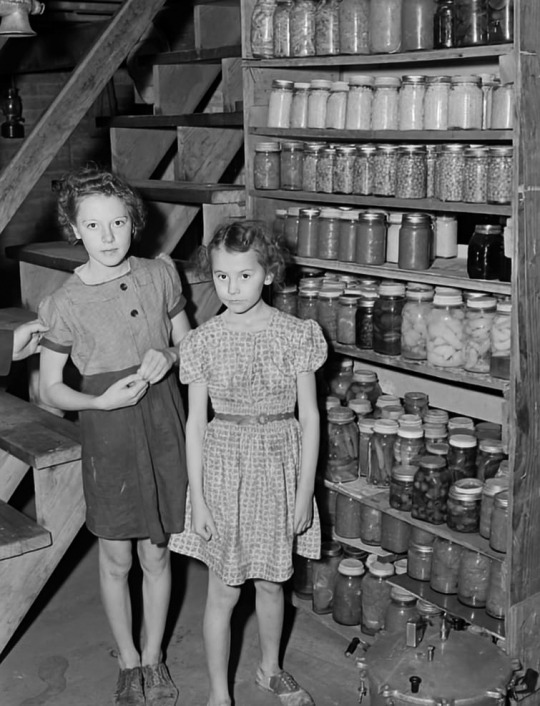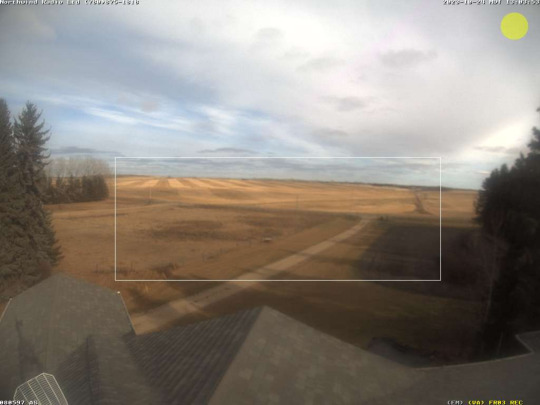#security farm
Explore tagged Tumblr posts
Text
Best Farm Security
youtube
#ReefDVMs#RMSpeltz Farm#solar light#best solar light#dyi solar light#solar street light#best security on a farm#security farm#security light#solar#farm light#farm solar#amazon light#cheap solar light#best yard light#street lamp#parking lot light#parking lot solar light#bright solar light#bright security light#bright farm light#barn light#barn solar light#installing solar light#street light#Youtube
0 notes
Text
The 4 Big Meat Packers In America Are Making A Move To Bankrupt Small Farms In America Starting In August
“This is a way that they're gonna be trying to force us out”
“The big 4 packers are killing the American cattle industry right now. Projected by August, each cattle rancher that is selling their animal is gonna be making $30 less per 100 pounds on that market ready animal.
- The American cattle rancher makes about 30% of every dollar earned on that animal - With this gonna be set in place, this is gonna take us down into the twenties.
This is gonna be a real scary place for the American cattle rancher. If they can't make a profit or make a living off of what they're selling, their ranches are gonna be put up for sale.
This is a way that they're gonna be trying to force us out.
- And not only that, the corrupt thing is they're gonna be marking everything up $30 to every 100 pounds that they're making in return.
So with that being said, guys, we need to get back to buying local, supporting our local people. And as always, buy American and buy local.”
#No Farms - No Food#No Farmers - No Food - No Future#Food Security#Advocate for Agriculture#Support Local Farmers#Like Minded People#Stuff#Do Some Research#Make Tumblr ★ Great Again
815 notes
·
View notes
Text





Say hello to my Superstar Rodeo DCA AU!!! Featuring Rodeo Superstar Eclipe, Rodeo Clown Sun and Resident Farm Boy Moon💖✨✨💐💐
#my art#my artwork#fnaf#fnaf security breach#five nights at freddy's#dca#fnaf dca#fnaf daycare attendant#sun fnaf#fnaf sun#moon fnaf#fnaf moon#eclipse fnaf#fnaf eclipe#superstar rodeo au#rodeo superstar eclipse#rodeo clown sun#farm boy moon#I LOVE EMMMMM RAAAA
648 notes
·
View notes
Text

As with doctors, British farmers make their daily rounds too.
#English farmer#Lake District#English countryside#ATV#UK#trailer#pet dogs#all-terrain vehicle#farmhouse#rural britain#agriculture#food security#farming#hard work#dedication
273 notes
·
View notes
Text
My fav part abt twst lore is thinking abt how species that live for a long time (like fae, maybe dwarves, maybe elves if they're kicking around) must all have like... the most interesting work histories. Like no way they're keeping 1 job for 700+ years (unless you're a Senate member who doesn't seem to want to retire ever). Imagine getting a resume from an applicant and it's a 300 year long employment history that's somehow relevant for the position 😭😭 it'd take me out fr HR is crying in this world
#twst#this comes from me and my several odd jobs#went from fast food to research to embalming bodies for a year to deciding i dont like it#to research to government to farming for a stint to more gov#to security work briefly#like i get it
63 notes
·
View notes
Text
self care is farming for aventurine <3 🙇🏻♀️



#I'm farming his trace materials right now <3 his ascension materials I already have secured !!#lastly I'll need to figure out what artifacts I'm going to use :))#๑•ᴗ•๑ yoru approved'
79 notes
·
View notes
Photo

John Vachon. Canned goods of Hersch family. Red River Valley Farms, North Dakota. 1940 (FSA)
I Am Collective Memories • Follow me, — says Visual Ratatosk
#BW#Black and White#Preto e Branco#Noir et Blanc#黒と白#Schwarzweiß#retro#vintage#John Vachon#canned food#Red River Valley#North Dakota. 1940#1940s#40s#FSA#Farm Security Administration#kids#children#crianças#gamins#enfants#Kinder#子供たち#児童
60 notes
·
View notes
Text
The World Food Summit of 1996 approached food security through the principles of ensuring there is enough safe and nutritious food that can be accessed daily to meet healthy dietary needs and food preferences. By definition, this is a desirable and worthy goal. However, in the years since, food security has developed into a paradigm which does not question the underlying power dynamics and the reproduction of material conditions that make food insecurity a permanent feature of the global order. At its core, the food security paradigm deals only with access to food, without challenging the political and economic structures that determine and control access, as well as distribution. By failing to address the root causes of hunger and famine, the food security paradigm makes it impossible to end hunger globally. Of course, many people worldwide possess food security, but this is restricted to increasingly limited geographic pockets. In terms of the people localised in one area, food vulnerability is influenced and determined by class, race, gender and, of course, citizenship status. Globally, “underdevelopment” and “de-development” lead to widespread food insecurity across areas. Another problem with the food security paradigm is that it is easily co-opted to generate partial answers that pose no threat to the corporate food system, or worse, that even open up new profit opportunities. Accelerated by other crises, the food security paradigm becomes ever more dependent on aid, be it through direct food delivery, cash transfers or small development projects that cannot compete with the food giants and their price-setting powers. In practice, a “science of food security” emerges, one which takes as its focus calories and the output that is compatible with precision agriculture having the aim to increase crop yields and to assist management decisions using high technology sensor and analysis tools. This model tends to be reliant on “Green Revolution” technologies that rely on chemical fertilisers and pesticides and that are tied to colonial projects and corporations, in order to optimise resources in aid response and/or development projects. In this rationale, food insecurity can be addressed by reaching optimum yields of certain crops that should meet the demand for fats, fibres and protein. All of this is carefully managed and data-driven. Precision farming is advocated by the Alliance for a Green Revolution in Africa (AGRA) with the objective of optimising, “agricultural value chains […] critical in advancing food and nutrition sufficiency without increasing the size of land under cultivation.” The framing of food that reduces it only to “optimal input” relegates vital elements of food production and the culture of eating, like territory ownership, taste, heritage, care, well-being and connection as secondary. This reductionist approach has, though, proved useful to corporate agriculture, since it reinforces the case for genetically modified crops (GMOs), more efficient fertilisers, and the standardisation of food production for market purposes. Advocates of plant breeding technologies (including GMOs and hybrid seeds) argue that government overregulation is an obstacle to achieving food security. Overregulation, as the argument goes, denies populations the opportunity to grow crops that have increased nutrient use efficiency and are more resilient to climate shocks.
[...]
The paradigm of food security is about optimising productivity. It’s true that productivity matters – after all, feeding the world requires enormous quantities of food. But if productivity is approached solely as a technological problem, it reinforces the tendency to fragment the quantitative and qualitative aspects of food production and consumption. On the quantitative side, production for food security is viewed as a challenge of multiplication. Whereas division, that is, distribution of food, is left to logistical planning. This ignores what Raj Patel identified in his influential 2007 book Stuffed and Starved, as the bottleneck of power that concentrates international food distribution among a small set of corporations. This bottleneck excludes the poor and small-scale food producers from decision-making. It also normalises worrying tendencies, such as an overreliance on industrial animal exploitation as a protein source, which has direct health implications, as well as longer term consequences like the proliferation of new viruses, greenhouse gas emissions and inefficient use of water and soil.
28 May 2024
61 notes
·
View notes
Text
Day 2 of Au August:
Mer Au: Moon

Farm Au: Sun

Music 🎶
#fnaf#art#five nights at freddy's#security breach#fnaf dca#fanart#five nights at freddy's security breach#fnaf ruin#fnaf fanart#dca sun#moon fnaf#fnaf moon#moondrop#mer au#mer!moon#traditional art#au august#my art#trickytripp1art#farm au#sun dca#sundrop fnaf#fnaf sun#sundrop#Spotify
32 notes
·
View notes
Text
Depression-era photojournalist Dorothea Lange took this photograph of Thomas Cave, an unemployed lumberman, in the bean fields of Oregon in 1939.

#dorothea lange#great depression#photojournalism#farm security administration#vintage photography#vintage men#1930s#smoking#tattoos
49 notes
·
View notes
Text

BURNABY, CANADA.
99 notes
·
View notes
Link
224 notes
·
View notes
Text
THE GERMAN FARMERS WON
After Bringing Berlin to a complete halt, the Government have backed down on several ludicrous taxation & net zero policy impacting food production. Of course you won’t see this on fake news MSM as they don’t wish you to know the wider narrative and/or implications of. This however is just the battle & not the war.
#Germany#Farmers#Well Done#Food Security#Advocate for Agriculture#Support Local Farmers#No Farms - No Food#No Farmers - No Food - No Future#Like Minded People#Make Tumblr ★ Great Again
747 notes
·
View notes
Text

Oh Moon, we’re really in it now…
#my art#my artwork#fnaf#fnaf security breach#five nights at freddy's#farm bot moon#superstar rodeo au#moon fnaf#fnaf moon#fnaf daycare attendant#daycare attendant au
378 notes
·
View notes
Text

Rhan's first escape from the Farm didn't go as smoothly as they had hoped.
#but at least the blood all over them isn't theirs!#its my silly little headcanon that the Farm is located in the dead middle of the woods#with one road in and out of its secure location#which is bad news for a little telepath who doesn't have any survival skills.#but they will survive.#oc: rhan becker#fhr sidestep#fallen hero retribution#fallen hero#sidestep#fhr#blood#tw blood
22 notes
·
View notes
Text

A New Future in Urban Farming in NIgeria
The severity of this problem is felt most acutely in cities, but the solution could lie within them too. Ebenezer Howard, in his 1898 book To-morrow: A Peaceful Path to Real Reform (later revised and reprinted in 1902 as Garden Cities of To-morrow), proposed practical solutions to the overcrowding and industrial pollution of Victorian cities by creating self-sufficient suburban cities surrounded by agricultural lands.
Pre-colonial African towns were similarly bordered by farmlands, as people were mostly subsistence farmers. Even with the advent of urbanization, post-independence, urban and peri-urban farms were a key feature across African cities. City residents cultivated varying sizes of plots from backyard farms to appropriated cul-de-sacs and a few hectares of peri-urban farms on the edge of the city where residents grew vegetables like spinach, bell peppers, pumpkin leaves, and tomatoes. These offered a degree of self-sufficiency for most cities. Sadly, all of these have been lost to the mindless urbanization that has characterized the last half-century.
No city in Nigeria has integrated food systems into their urban fabric, yet the growing population, security, climatic, and economic challenges necessitate a new way of thinking to mitigate the effects of climate change and its impact on food production. Urban farming offers us a lifeline. There is the potential for big cities such as Abuja and Lagos to produce a quarter of their vegetable needs, which would bolster food security, cut prices, and reduce carbon emissions. Growing food within the cities eliminates the expensive, cumbersome and carbon-intensive logistics, while also offering organic food to residents. These initiatives will also create jobs, improve nutrition for the local population, and improve the overall quality of life for residents.
12 notes
·
View notes